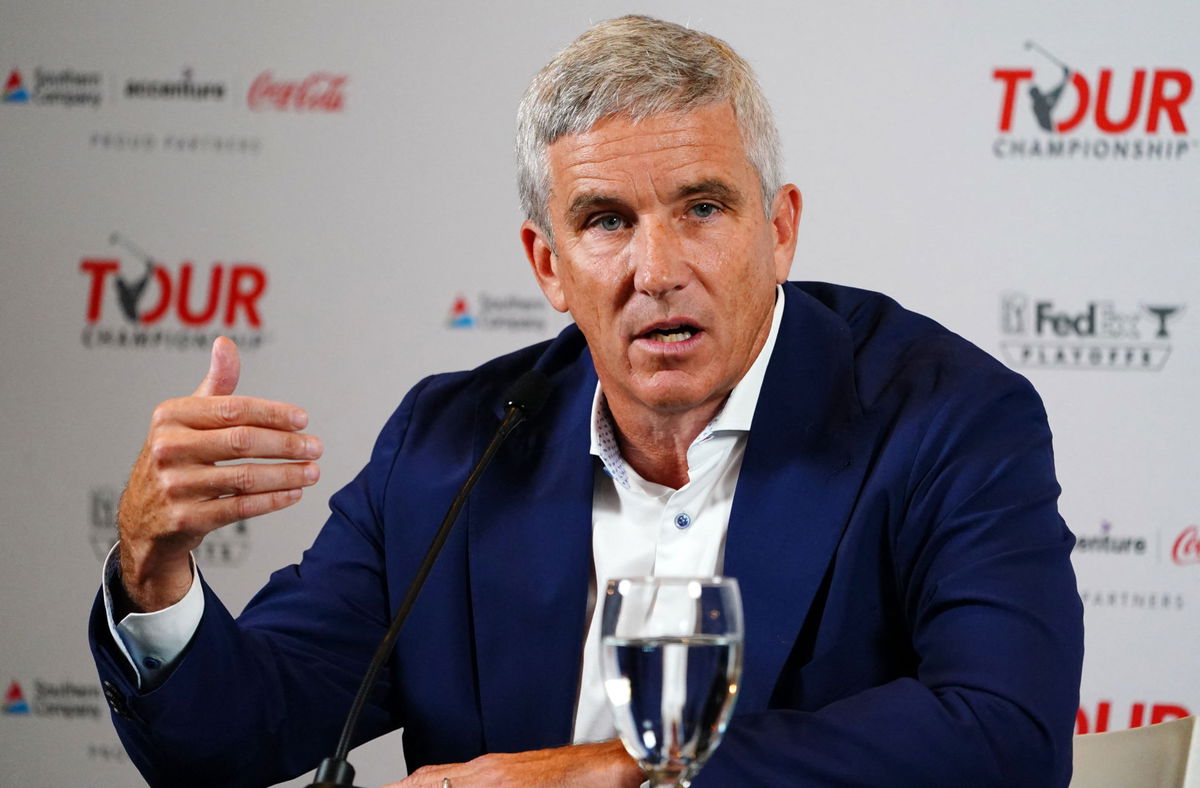

What is guiding the PGA Tour at this moment? A seemingly utilitarian motif of having something for everyone—in this case, the Tour’s biggest stars? Or to pacify the golf pros who suddenly became aware (thank LIV Golf for that) that they could earn much more?
Watch What’s Trending Now!
If, only if, the PGA Tour could do away with its identity. If the PGA Tour could run the risk of losing more sponsors. If Jay Monahan can convince the bottom-rung players that the Tour still values meritocracy because Signature events stand in the opposite of everything the Tour stood for.
The Sentry will usher in a new era on the Tour, the Signature Era, as the top brass calls it. But aside from bootlegging LIV Golf’s no-cut, limited-field format and the pompous claims of swollen purses, where will this $20 million muscle-flexing land the PGA Tour in the future?
ADVERTISEMENT
Top Stories
Ex-Wife Elin Nordegren’s Reaction to Tiger Woods Dating Vanessa Trump Speaks Volumes

LIV Golf Braces for Another Possible Exit in Wake of Brooks Koepka Departure

Golf Fans All Say the Same Thing as Pro Golfer Shows Big Heart With Shock Withdrawal

Amanda Balionis Confirms New Relationship Ending Months of Rumors

Rory McIlroy Makes Feelings Clear on Bryson DeChambeau’s PGA Tour Return: ‘Have Lost…’

Meritocracy waning on the PGA Tour?
For golfers who finished outside the top 50 on the FedEx Points list, signature events are rich in irony. The $20 million purse-elevated events with around 70–80 players will offer 700 points to the winner. The Sentry, the first of the eight Signature events, starting on January 4, has a 59-man field.
Whereas the swing tournaments, with 144–150 men fielding in between the elevated events, have only 500 points on offer for the hard grind. The gross point disparity becomes more crude as you descend the leaderboard.
ADVERTISEMENT
Precisely because of this, Lanto Griffin has a bone to pick. Give them all the money they want, but why take away the points? ‘Them’ here refers to the top golfers, which includes the top brass of the PGA Tour Policy Board as well.
DO YOU HEAR THE PEOPLE SINGGG pic.twitter.com/EsZLrN9sH5
— No Laying Up (@NoLayingUp) December 2, 2023
ADVERTISEMENT
Griffin voiced his frustration: “I go play Torrey Pines with 156 players and a cut, and Rory goes to L.A. the next week in a 78 players, no-cut field, and he gets nearly three times the points for the same finish. How is one going to compete with that?” But it’s not just Griffin; even veterans who qualified are not entirely happy with it.
Veterans find an uncanny parallel in history
Take Lucas Glover, for example. The veteran has earned his spot at the $20 million signature events. Yet he pulls no punches in condemning Tour’s policy. “We’re touting ourselves as the best Tour in the world, so why wouldn’t you reward the best 125 guys and let them play in your biggest events?”
ADVERTISEMENT
Glover draws an interesting parallel here. “We’ve seen the World Golf Championship model doesn’t work. We don’t play those anymore. So, why that number?” The World Golf Championship, a model started by former PGA Tour commissioner Tim Finchem, has unofficially ended this year.
Q&A: Lucas Glover unplugged on Ryder Cup snub, why signature events are 'terrible' and whether LIV players should be allowed back https://t.co/5pdLIQzUDd pic.twitter.com/oGgOuok46S
— Golfweek (@golfweek) November 8, 2023
Similar to signature events, the World Golf Championship had limited fields with no cuts. But unlike today’s elevated events, WGCs offered various openings for golfers from International Tours. Even then, it didn’t work out and eventually lost its importance. Glover questions the rationale behind once again flirting with a similar idea.
ADVERTISEMENT
Ironically enough, the WGCs too were brought to nip a rival tour in the bud. The current LIV Golf CEO, Greg Norman, first floated the idea of international tours with only the top forty players. However, the threat didn’t materialize because of the absence of a deep-pocketed financier like PIF. This time, too, the PGA Tour is cornered. Once again, the Tour is forced to introduce a failsafe measure that might end very badly.
Sponsors are stretched thin
The PGA Tour’s drive to outmuscle LIV Golf in its own game is backfiring. Two long-time sponsors, Honda and Wells Fargo, have decided to end their partnership. While Honda already left last year, Cognizant has replaced them since, and Wells Fargo will end their tie-up this year.
ADVERTISEMENT
Reportedly, Wells Fargo was not willing to break the partnership, but the Tour pulled the trigger. It’s not just these two; whispers on the inside indicate more sponsors will follow suit if the demand keeps increasing.
Is the $3B framework agreement a solution to this? Perhaps the poaching will stop, and so will the dollar race. Money might trickle down to the bottom if both SSG and PIF come on board. However, whether points, the last vestige of meritocracy the Tour prided itself on, will trickle down will depend on the management and how far they can think beyond the four walls.
ADVERTISEMENT
Watch This Story: ‘Fractured and Politicized’: Alan Shipnuck Thrashes the PGA Tour Amid Jon Rahm’s Massive Money Jump
ADVERTISEMENT
ADVERTISEMENT
ADVERTISEMENT

